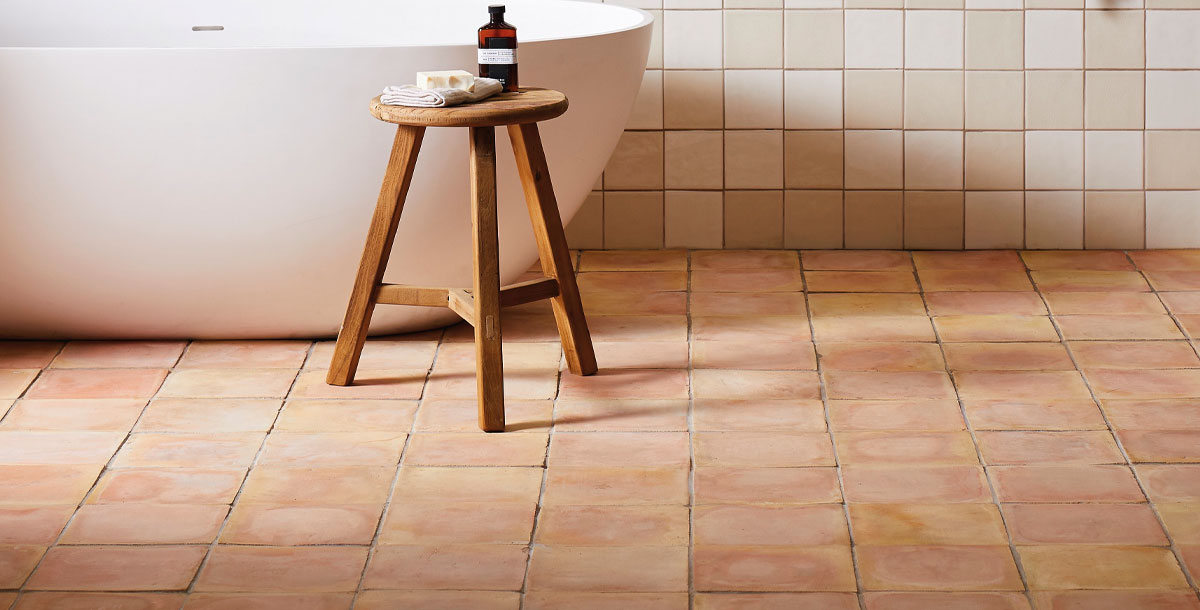Eco-friendly bathroom flooring
These flooring ideas are low on environmental impact and high on style
When it comes to bathroom flooring ideas, some are looking to be more eco-conscious. From the production process to installation and to the product itself it preferable to have a carbon-low or neutral impact.
Choosing sustainable flooring options also promotes healthier indoor living. Materials like bamboo, cork, reclaimed wood, and recycled tiles are eco-conscious choices that minimize deforestation and resource depletion. Additionally, these options can feature non-toxic finishes, reducing indoor air pollution.
Baked earth
In their simplest form, terracotta tiles have a rustic charm that belies their durability. They are so long lasting they will not biodegrade, but they can be lifted and reused indoors or out. Seal to prevent water stains.
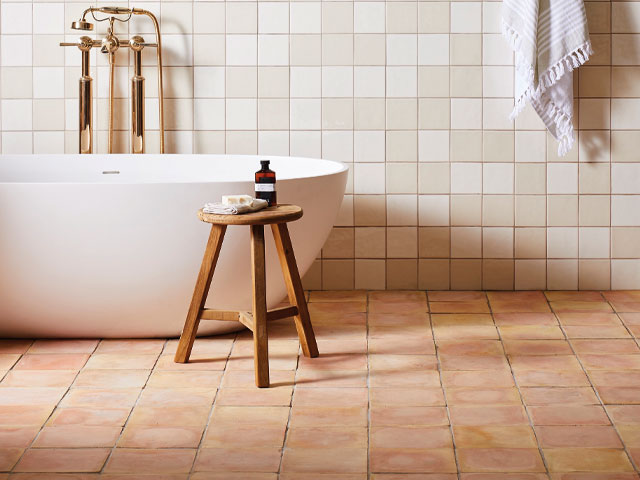
Handmade classic terracotta tiles from Fired Earth
The road less travelled
Select British or European manufacturers and materials to limit the carbon emissions associated with transportation.
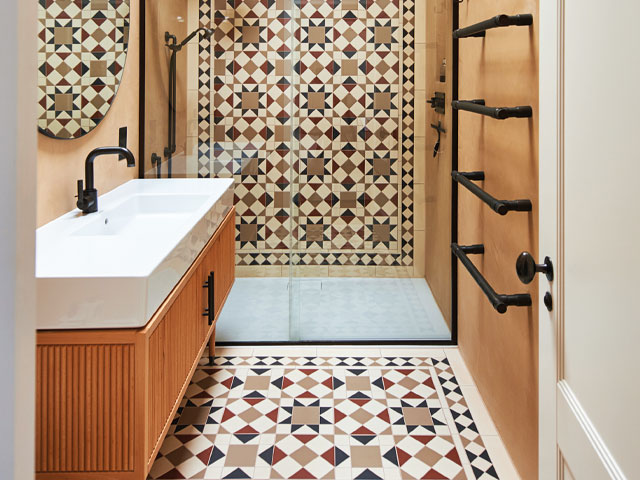
Bespoke plain colour geometric tiles from Craven Dunnill Jackfield. Project by Simpson Studio
Go with the flow
For a seamless poured floor, choose an eco-conscious microcement or resin formula. Suppliers include Carrcrete and Sphere8.
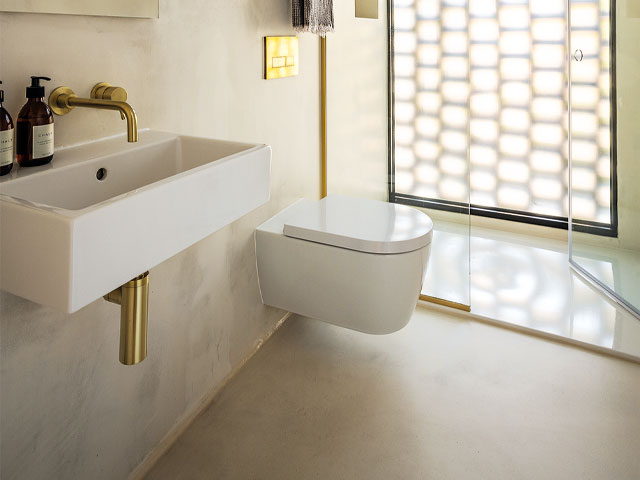
Ready-to-use microcement, from Beton Ciré. Bathroom refurbishment by TR Studio
Cut and come again
With carefully managed harvesting, bamboo and cork are both naturally renewable material options.
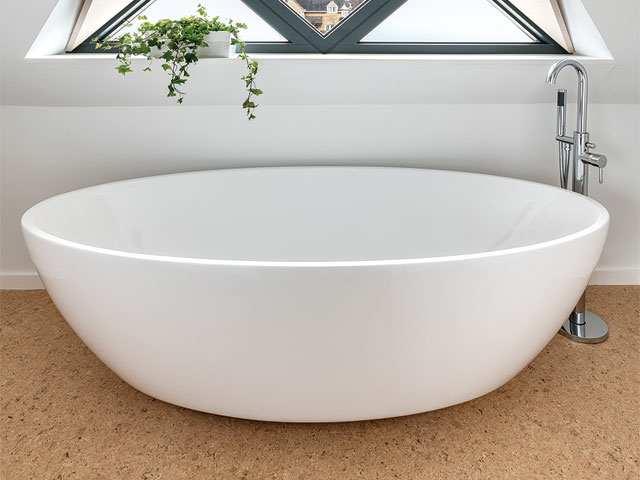
Glue-down cork tiles and Uniclic cork planks from The Cork Flooring Company. Project by Design Storey Architects
For a long lifespan
Durable floor products in timeless designs stay out of landfill for longer. Made from clay, sand and feldspar fired at high temperatures, porcelain tiles are hardwearing and long lasting.
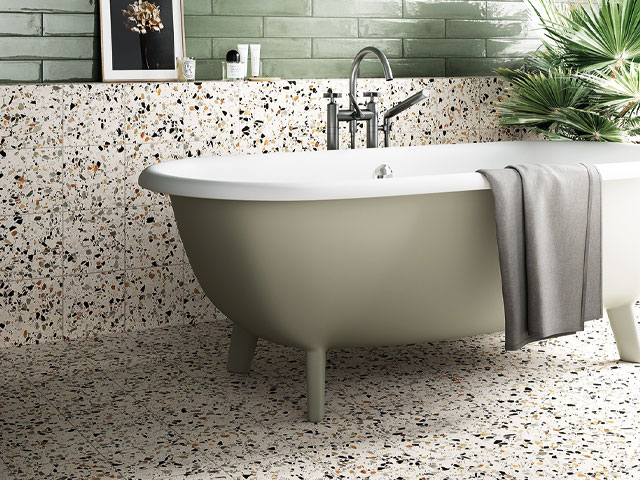
Arlo terrazzo-effect porcelain tiles from Porcelain Superstore
Innovate responsibly
Some solid surfaces include a proportion of recycled and recovered materials. Silestone Hybriq+ quartz products are also manufactured using renewable energy.
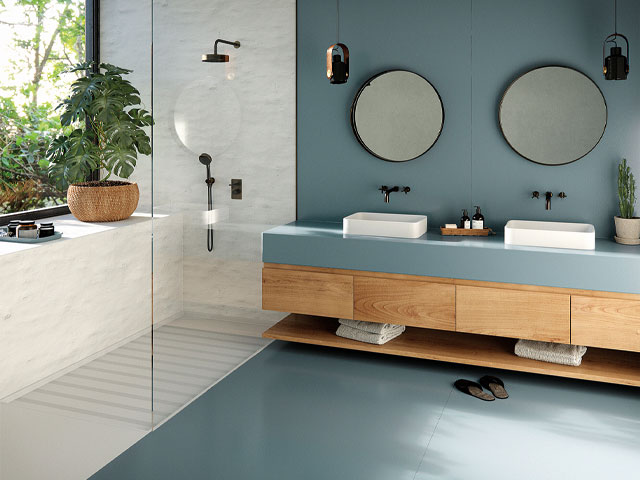
Silestone Sunlit Days in Cala Blue from Cosentino
Choose wisely
When buying stone, ask the retailer to guarantee that it’s been quarried responsibly from a well-managed and plentiful supply. The Ethical Stone Register has more information.
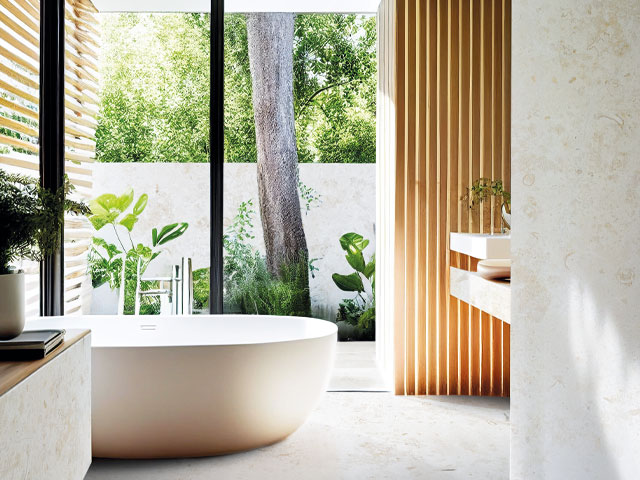
Jura beige German limestone from Cullifords
Better with age
If you’re buying tiles reclaimed from derelict buildings, check their provenance to ensure they have been responsibly recovered and that there is sufficient stock for your needs.
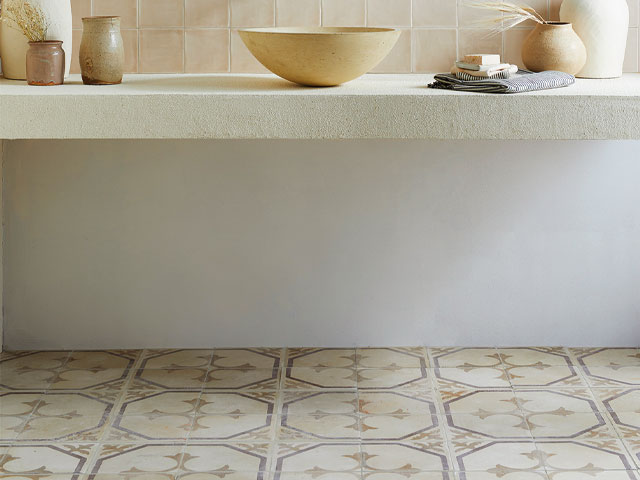
Reclaimed handmade encaustic floor tiles, from Bert & May
On a roll
Linoleum is made from linseed oil, wood flour and pine resin. It’s completely biodegradable, compostable and comes in a wide range of contemporary plain designs that can be combined to create larger patterns.
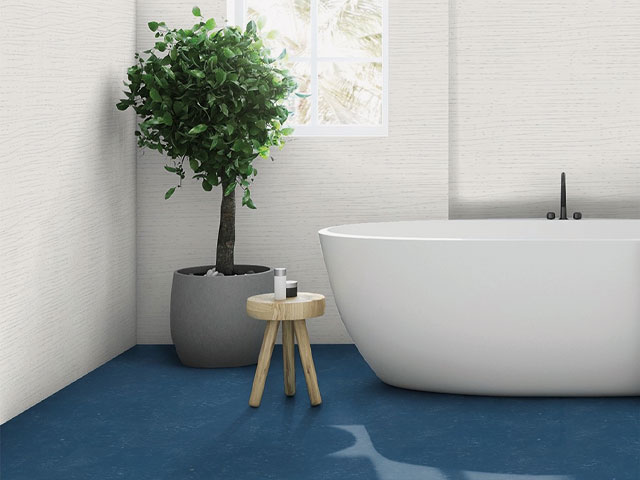
Gerflor Arabesque 2m-wide sheet linoleum from DCTUK
Timber replica
Waterproof wood-effect laminate is a practical option for wet are as where solid wood flooring is likely to swell and warp. Avoid laminate and vinyl made with polyvinyl chloride (PVC). Unlike PVC, polypropylene products do not release toxins into the air during manufacture or use.
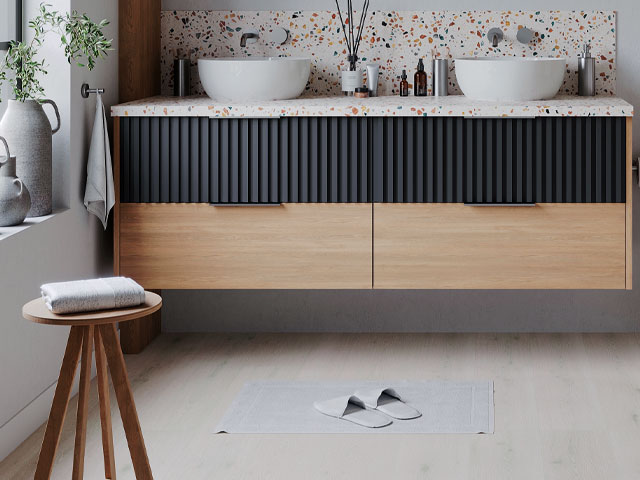
No Vinyl Imperial Limed Oak tiles from The Wood Flooring Company
Refreshing change
Painting old floorboards is cost effective. Choose a water-based formula that’s manufactured in the UK.
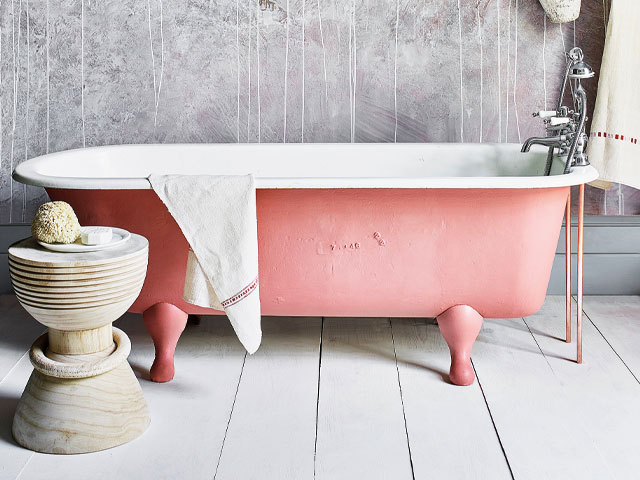
Floor painted in Old White and bath in Scandinavian Pink chalk paint from Annie Sloan
Recover and reuse
Forward-thinking manufacturers including UK-based Johnson Tiles and Sarsen Stone Group are making tiles from recycled materials.
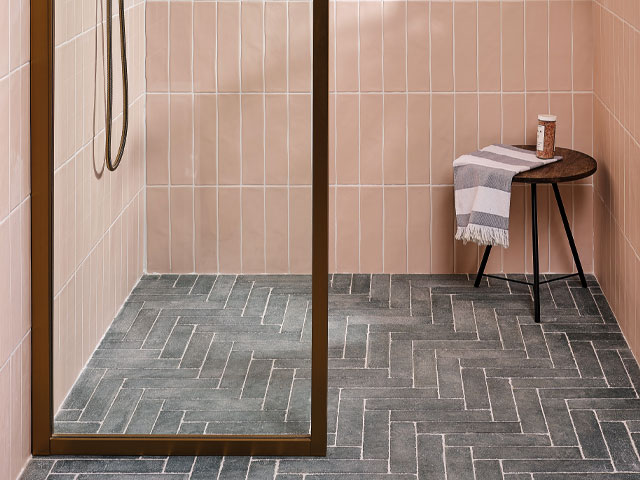
Reform Reformed stone emerald green tumbled finish tiles from Ca’ Pietra
What lies beneath
Wet underfloor heating advice from Tom Edmunds, general manager at Wunda
- While piped water-based or wet underfloor heating (UFH) connected to a heating system may be more costly to install than electric UFH, it’s around 60 per cent cheaper to run, and may be more environmentally friendly due to lower energy consumption. Water-based UFH can also be teamed with heat pumps, and works in conjunction with radiators allowing for single floor-level installation.
- Professionally fitted screed systems involve burying pipework beneath a thick layer of screed and tend to be suited to selfbuilds or major renovations. The minimum depth for a traditional cement-based screed is 65mm. But opt for a castellated panel and liquid screed system and this can be reduced to around 35mm.
- Hassle-free dry-fix systems are ideal for retrofit projects as they can be laid directly on top of existing or new wooden and concrete floors. The polystyrene boards and slot-in pipes can be laid by most novices, and should come with a floor plan outlining the board and pipe layout.
- As bathrooms tend to be used for short periods, use a dry-fix system as this offers faster heating times of around 30 minutes. Zone rooms separately so you don’t always need to heat an entire floor or your whole home. This can be achieved using energy-efficient smart controls.
- Whatever the system, the spacing between pipes is critical as the closer the pipe centres are, the more even the spread of heat. This will save money and energy, and futureproof for any low energy heat sources.
- Wet UFH is compatible with most hard floorings. If you choose timber, fitting a heating probe with a 27°C limit will protect against fluctuating temperatures. A compressive strength (kPa) of 400 is required for all tile types.

